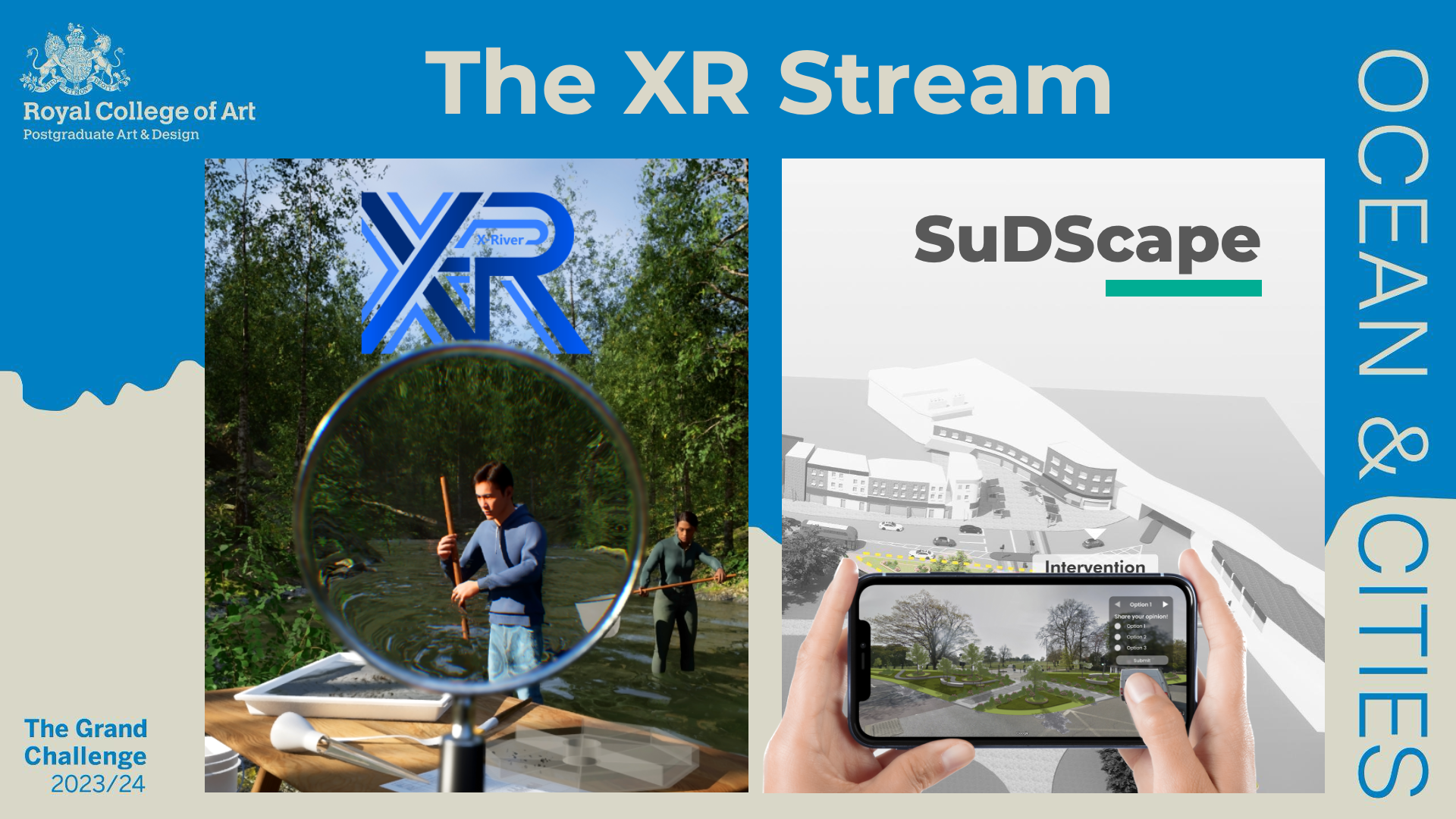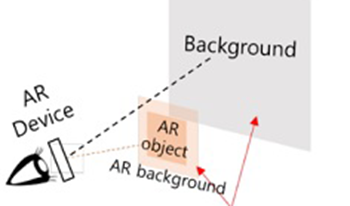
In 2024, we brought London closer to the ocean: Nearly 700 design students at the Royal College of Art participated in the Grand Challenge 2023/24. In teams of five, the students were tasked with tackling challenges around London and the Ocean from a design perspective. The challenge involved multiple methodologies, including design engineering, speculative design, service design, materials- and fashion-related approaches. Each team had one month to develop a compelling proposal. Fifty students participating in the Grand Challenge were able to join the Extended Reality/XR Stream: Ten teams of five students each came up with different design solutions using the Unreal Engine 5. This paper presents how Unreal Engine 5 was introduced to students through lectures and hand-on sessions, and how XR technologies were employed to creatively interpret the original brief of the Grand Challenge and how it inspired our students to come up with unique design propositions. In particular, we discuss here two case studies in detail: XRiver and SuDScape. These two student projects were among the top 13 teams exhibited at the final Grand Challenge show, offering insights and recommendations for incorporating XR into design education.

In an ideal AR device, only the AR object image should appear in the real environment. However, certain AR devices, such as those using a half mirror, also present the AR background surrounding the AR object due to the transmittance of the half mirror. This might be perceived as a two-dimensional display image overlapping onto the real environment. In this scenario, the perception of brightness might differ from cases where only an AR object is superimposed on the real-world background. To explore the brightness perception of AR images presented by AR glasses with half mirrors, we conducted two psychophysics experiments. In Experiment 1, using a single pair of AR glasses, we observed the brightness perception of AR images under various correlated color temperatures (CCTs) for exterior lighting. Participants perceived the AR image to be brighter than the reference image with the same luminance. The CCT of the exterior lighting had no significant effect. In Experiment 2, we investigated the effect of the AR background on the brightness perception of AR images using two pairs of AR glasses with different transmittances (35% vs. 70%). Participants perceived AR images to be brighter than the reference when using glasses with higher transmittance. These results suggest the presence of an additional contrast effect on brightness perception in AR glasses with half mirrors.

In the early phases of the pandemic lockdown, our team was eager to share our collection in new ways. Using an existing 3D asset and advancements in AR technology we were able to augment a 3D model of a collection object with the voice of a curator to add context and value. This experience leveraged the unique capabilities of the open Pixar USD format USDZ extension. This paper documents the workflow behind creating an AR experience as well as other applications of the USD/USDZ format for cultural heritage applications. This paper will also provide valuable information about developments, limitations and misconceptions between WebXR glTF and USDZ.

A major limitation of acousto-optic (AO) modulator-based holographic displays is their inability to present full-parallax. We propose that full-parallax capabilities can be added to these displays by integrating electro-optic (EO) modulators into the architecture. We validated this concept by rendering computational models and by fabricating and testing EO deflection devices in lithium niobate. Our models suggest that an AO/EO modulator that yields an EO deflection range of 18.2° using less than 5 V can be fabricated given the limitations of standard photolithography and lithium niobate waveguides. Actual deflection ranges were measured from our fabricated devices and were compared to those that were derived from our model. In the worst case, the experimental results differed by about 16% compared to the corresponding theoretical result. In the best case, the error was smaller than our measurement tolerances. The work we have performed sets the stage for the first instance of an integrated electro-optic/acousto-optic modulator for holographic displays.

Augmented and Virtual Reality are proliferating throughout daily life. Everyday utilities, such as Google Maps, deploy Augmented Reality (AR) to improve the user experience and increase its effectiveness. Similarly, Augmented and Virtual Reality have been used in the educational domain, where these applications have been shown to improve the learning curve and retention. In this study, AR is proposed as an innovative method to improve the effectiveness and efficiency of the education of nursing students. We propose to introduce this innovative technology in the education of future nurses. Within this study the researchers use augmented reality (AR) to help nursing students learn about physical assessment techniques for the heart and the lungs. Researchers have demonstrated increased memory retention while using AR [14][15]. In this study, we provide a holographic overlay including the internal organs heart, ribcage, and lungs to increase the understanding of accurate placement of devices required for assessing cardiac and respiratory issues using anatomical landmarks. In addition, the visual aspects are supported with audio sound tracks to enhance learning. The ability to project images accurately placed onto real world physical objects using AR headsets could lead to increased retention and deeper understanding leading to precision performance related to techniques in physical assessment of the patient.


Animated emoji in augmented reality (AR) enables users to create a humanoid version of themselves that mimics their facial expressions dynamically. In this study, we aim to explore how people perceive facial skin color in digital portrait in comparison with humanoid emoji in AR. We tried to identify the skin color representative regions and to estimate the color difference between the two contexts. We conducted a user study comprised of three tasks with 20 graduate students majoring in design and employed 24 portrait images in four skin tone categories. Through the user study, we first figured out that forehead and cheek regions, and particularly the linking band between eye and lip, were often considered as the representative region of facial skin color. Second, we observed skin colors become lighter in general, except dark tone. Furthermore, concerning the vidvidness, all four skin tone types became paler in humanoid emoji. Diverse ethnicities and contexts are expected in the future to provide a more robust and reliable analysis of the perception of skin color.

There is a demand to display image on a transparent medium. If we can show image superimposed on a window, it can attract interest of people. However, a current achieved transparent displays show images only on the display surface, hence it is difficult to show image superimposed on an object that exists behind the screen. Thus, it doesn't understand intuitively. On the other hand, a display which can be perceived the image behind the screen should be placed inclined. Therefore, it is difficult to apply to advertising and exhibition. The purpose of this study is to generate transparent display to show image superimposed on near an object that exists behind the screen. We propose a display which shows image not on display surface but at a different image of depth. In this system, to show the image at behind the screen, display device is reflected on the transparent screen which incorporates a half mirror array. In this study, we use the mirror array as screen in order to locate the display device at an appropriate place. We optimize the surface of display device and angle of all mirrors so as to minimize the virtual image distortion. To confirm the practicality of the proposed method, we conducted a simulation. From the result, we confirmed the virtual image was able to display designated position.